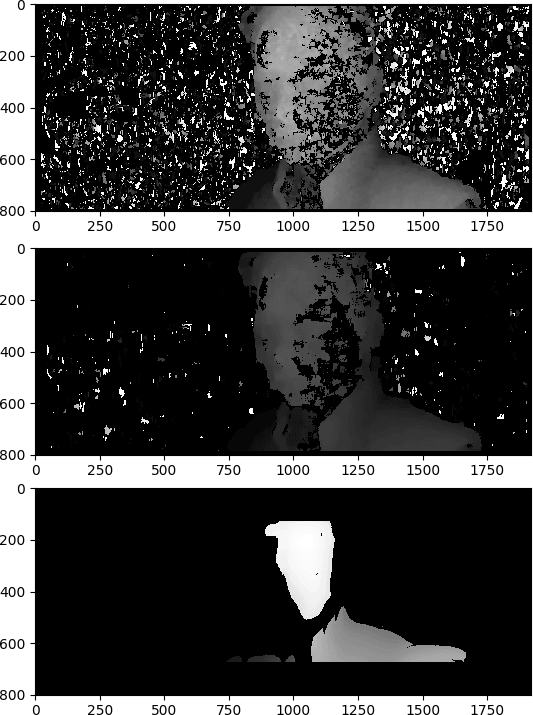
Depending on which side of the English Channel / La Manche you sit on, photography was invented either by Englishman Henry Fox Talbot in 1835 or Frenchman Louis Daguerre in 1839. By 1851, Englishman Sir David Brewster and Frenchman Jules Duboscq had perfected stereophotography. It led to an explosion of creativity in 3D photography, with the London Stereoscopic and Photographic Company becoming …
Continue reading →

I'm just getting started with the Oculus Quest 2 from Facebook Meta. It is amazing. OK, that's a lie. It's a pretty good tech demo of what one vision of the future could look like. But it is making a little bit of my brain itch. What Government services could / should be run in the Metaverse? Obviously, the answer is "none". Sure, you could create a virtual job centre, housing office, or DMV…
Continue reading →

Twitter can be amazing sometimes... I was reading about "L'Inconnue de la Seine". The face of a young woman found drowned in the river Seine in the 1800s. Her death mask was enormously popular - with copies of it appearing all over the world. Her smile was compared to the Mona Lisa and her face decorated the popular salons of the day. Her death mask was even the basis for the first "CPR…
Continue reading →

Here's an interesting conundrum. My TV can automatically detect when 3D video is being played and offers to switch into 3D mode - but how does the detection work? This post will give you a few strategies for detecting 3D images using Python. Firstly, some terminology. 3D videos are usually saved either as Side-By-Side images, or Over-Under images. Colloquially known as H-SBS and H-OU. Here's …
Continue reading →

A quick tutorial in how to recover 3D information from your favourite 3D movies. In this example, we'll be using Star Wars - The Last Jedi. tl;dr? Here's the end result (this video is silent): https://shkspr.mobi/blog/wp-content/uploads/2018/04/walker-text.mp4 Grab the code on GitHub. Let's go! Take a screenshot of your favourite scene. Something with a clearly defined foreground and…
Continue reading →

I've been sent a 3D camera addon to review - the Svpro SV-2560X3D-001 is a £65 stereo camera designed for Android. It will also work with a Raspberry Pi! It looks a little like a Microsoft Kinect - a single bar with two embedded cameras. The camera resolution is 720p on each lens. It clips on easily to a phone via a padded screw clamp. You need to install a dedicate 3D camera app in order …
Continue reading →

This blog post looks at the 3D conversion process for The Force Awakens. Where it succeeds and where it falls short. Last year I managed to blag tickets to the premiere of The Force Awakens - in 2D. The next day, we saw it again in 3D. I've never been a huge fan of 3D films and, despite owning a 3D TV, think the format is a bit of a gimmick. But the 3D Star Wars was something else! …
Continue reading →

Loading large 3D Models in the browser is extremely resource intensive. 2D images are trivial to resize and resample with negligible loss of perceived quality. 3D resizing is complex. As part of my "Pirate Museum" I wanted to display 3D scans of statues using WebVR. The only problem is, these files are huge. Take The Dancing Faun - at full resolution, that's around 230MB. Even on fast…
Continue reading →

You know how the Democratic People's Republic of Korea is neither democratic, nor particularly for the people, nor a republic? Yeah, so it turns out the "Universal 3D" format is pretty far from Universal! A little backstory... The Europeana Carare Project has some gorgeous 3D scans of ancient monuments and heritage sites. The only problem is that the 3D files are trapped inside PDFs. Yup -…
Continue reading →

A few days ago, I posted this animated gif that I'd created from the 3D Doctor Who Special. I created that gif manually, but I wondered if it was possible to create such an animation in an automated fashion. Turns out, it's pretty easy! This relies on ImageMagick - which is a powerful image manipulation tool. All of these scripts work on Ubuntu - and they should work on any GNU/Linux disto…
Continue reading →

I loved the latest episode of Doctor Who. What made it even better was the fantastic use of 3D. It had just enough "wow" moments to make the use of technology worthwhile - without totally overdoing it. I watched the episode live at home on my Panasonic TX-L37ET5B. After the broadcast, I wanted to watch it again. That's where the problems started. First, a quick lesson on how 3D TV…
Continue reading →

I was wandering round The Henry Moore Foundation last Friday - thanks to the delightful wedding of my good friends Mike and Nikki. Looking at the abstract statues and carvings, I was struck not only by their beauty, but by how easy they would be to reproduce with a 3D printer. Ok - ok! I'm a little obsessed since building a RepRapPro for work - but hear me out. Wikipedia has been collecting…
Continue reading →











